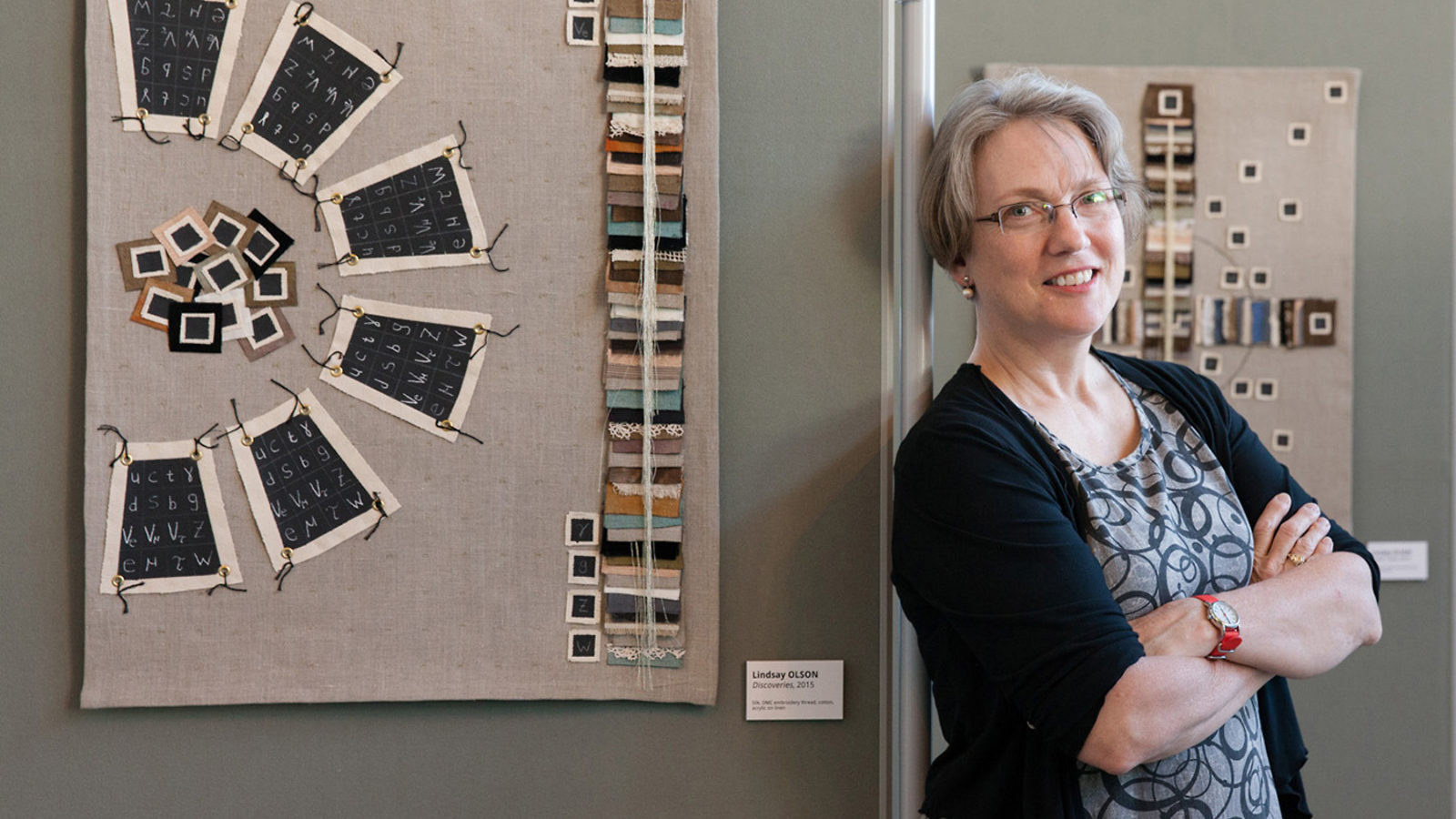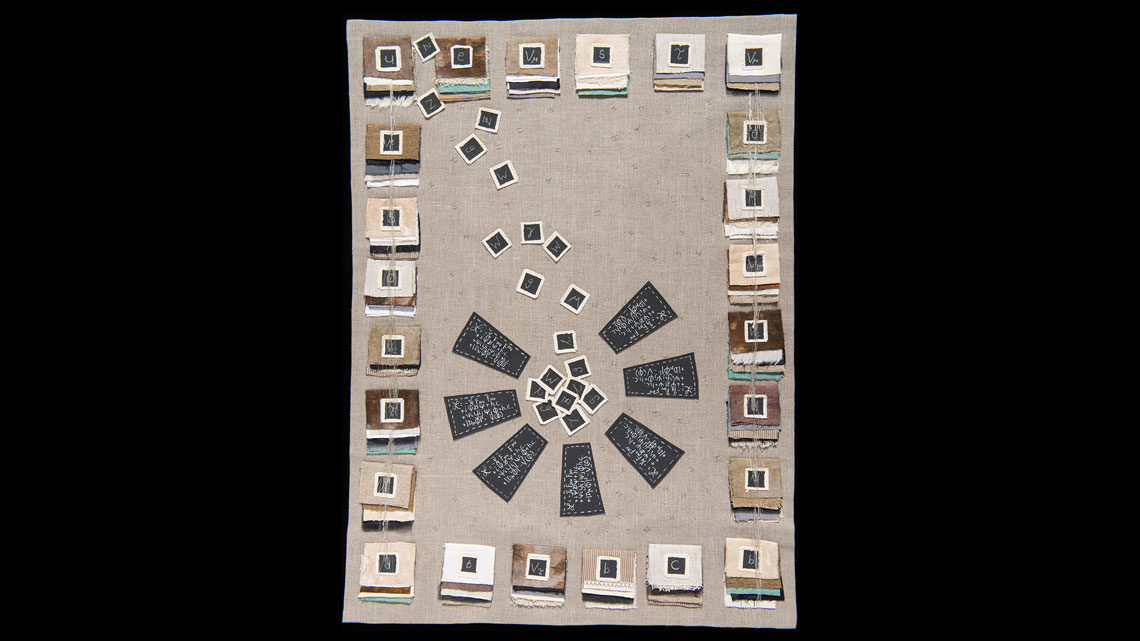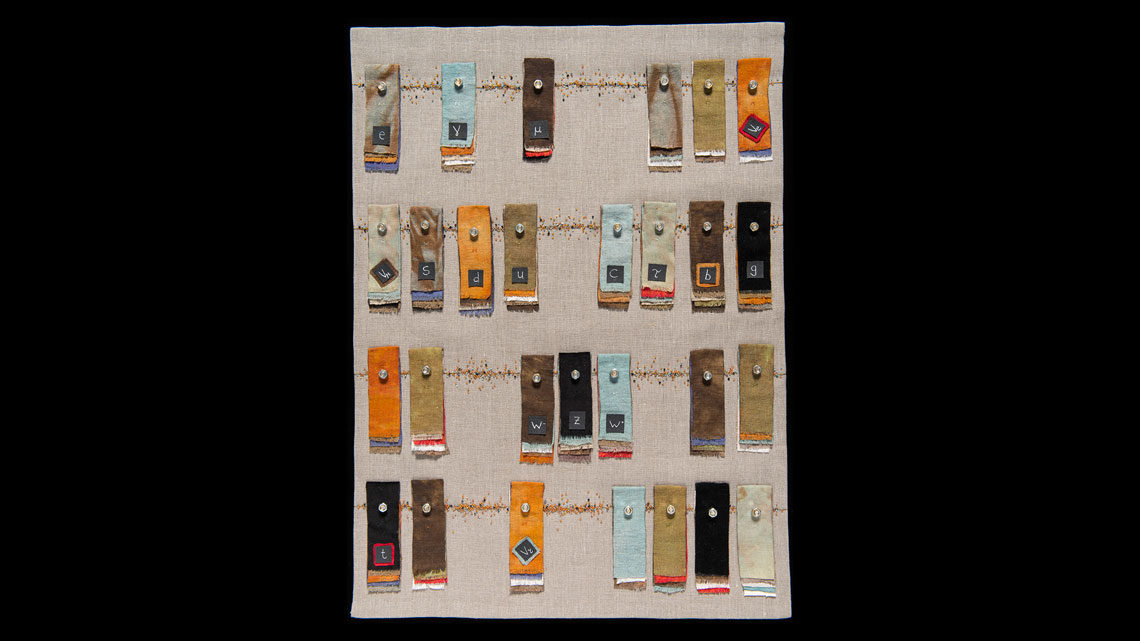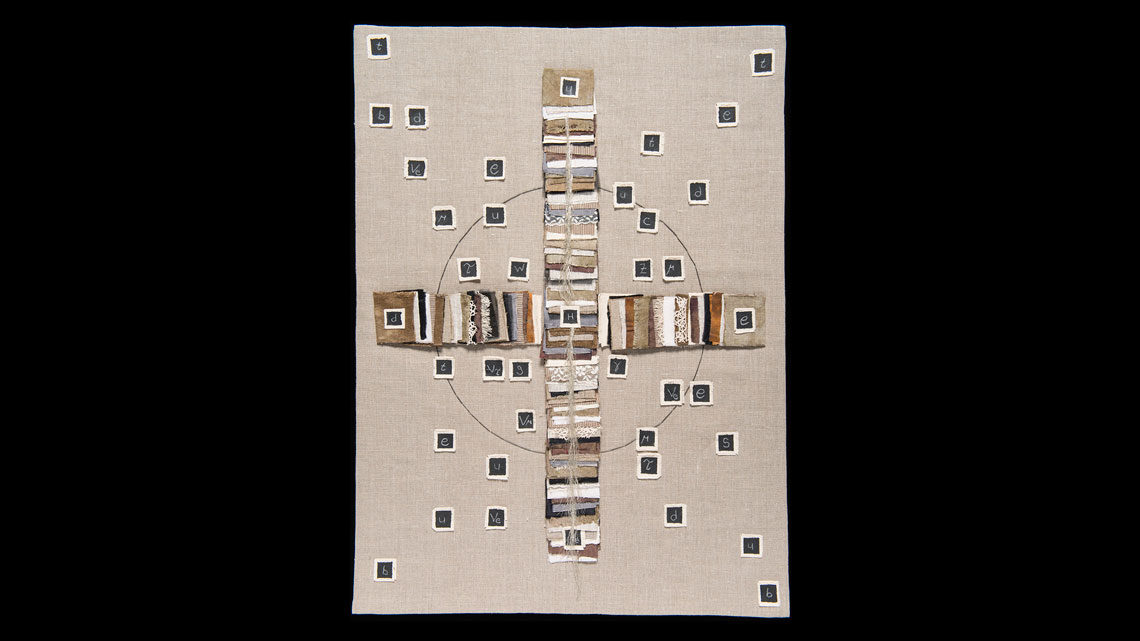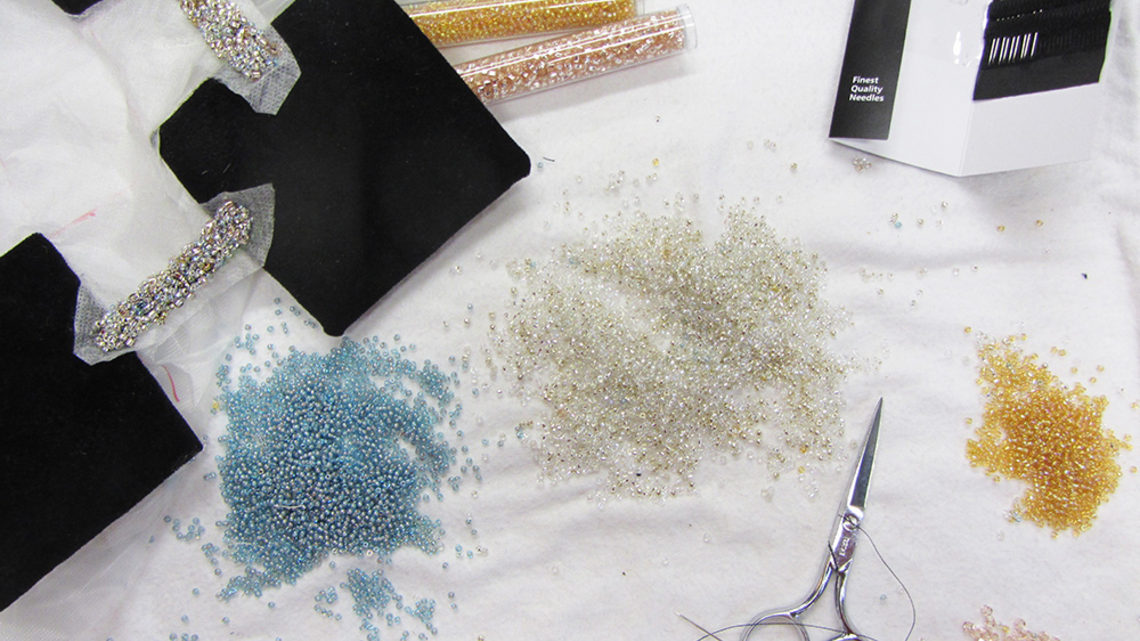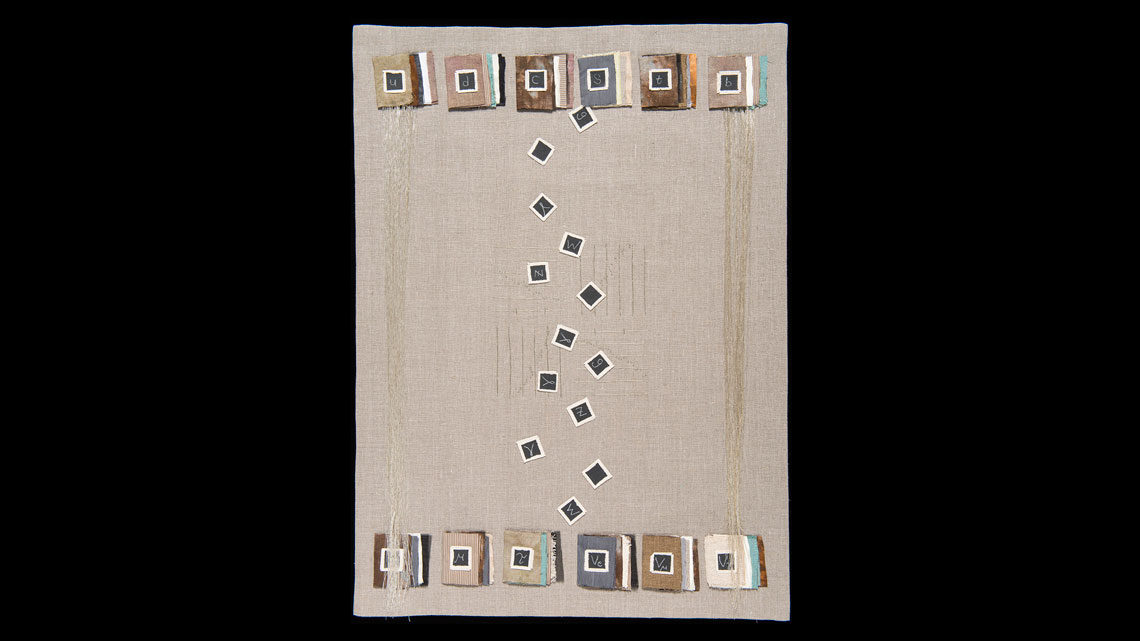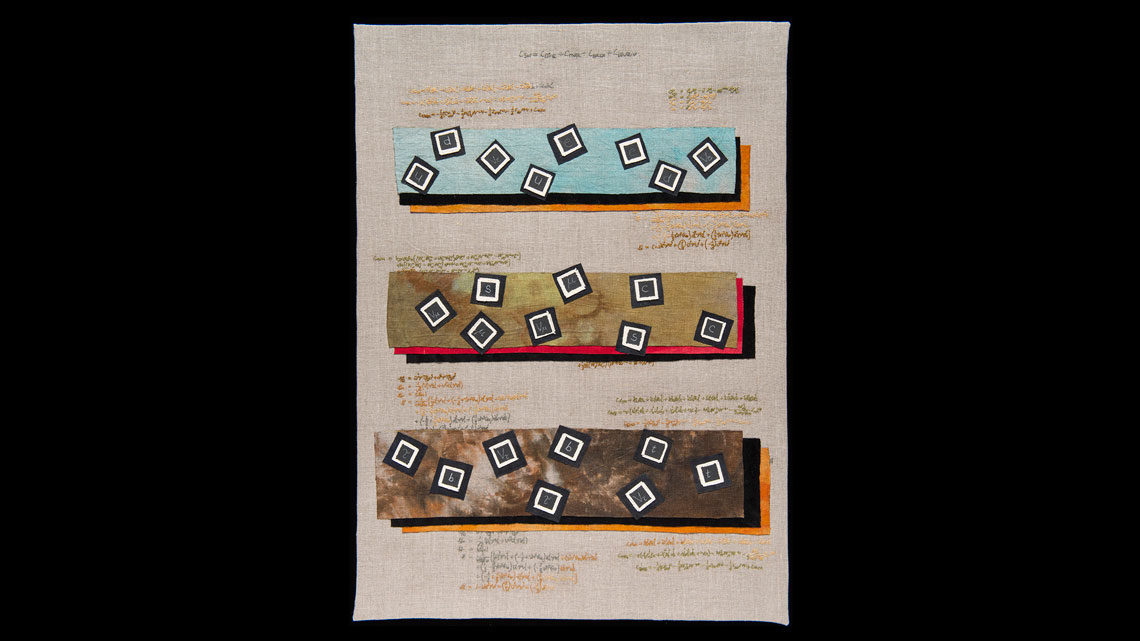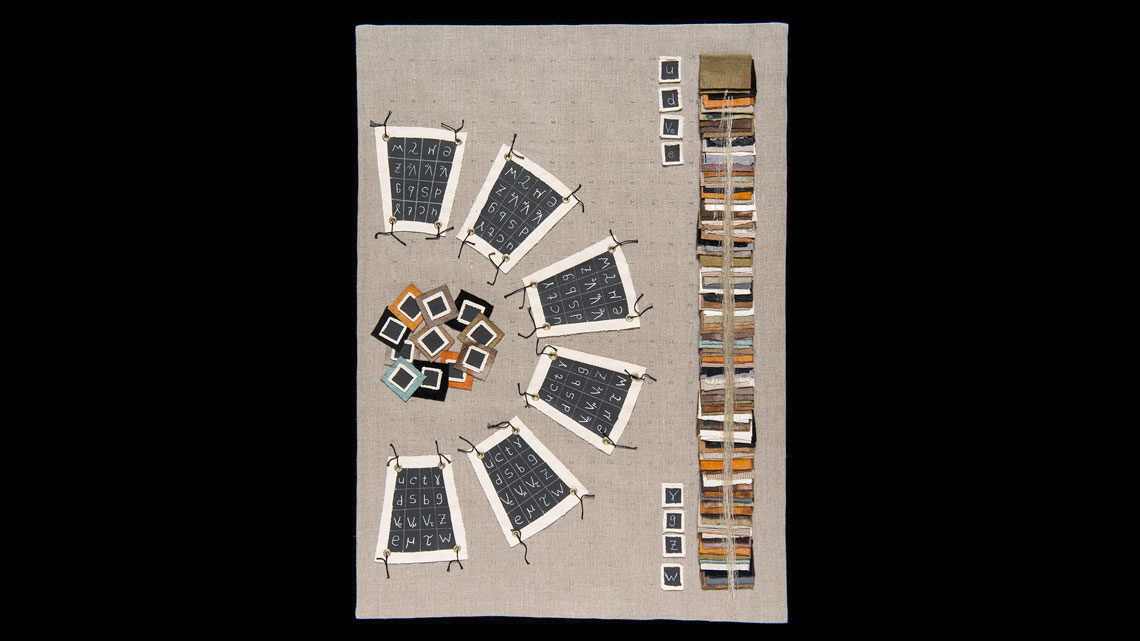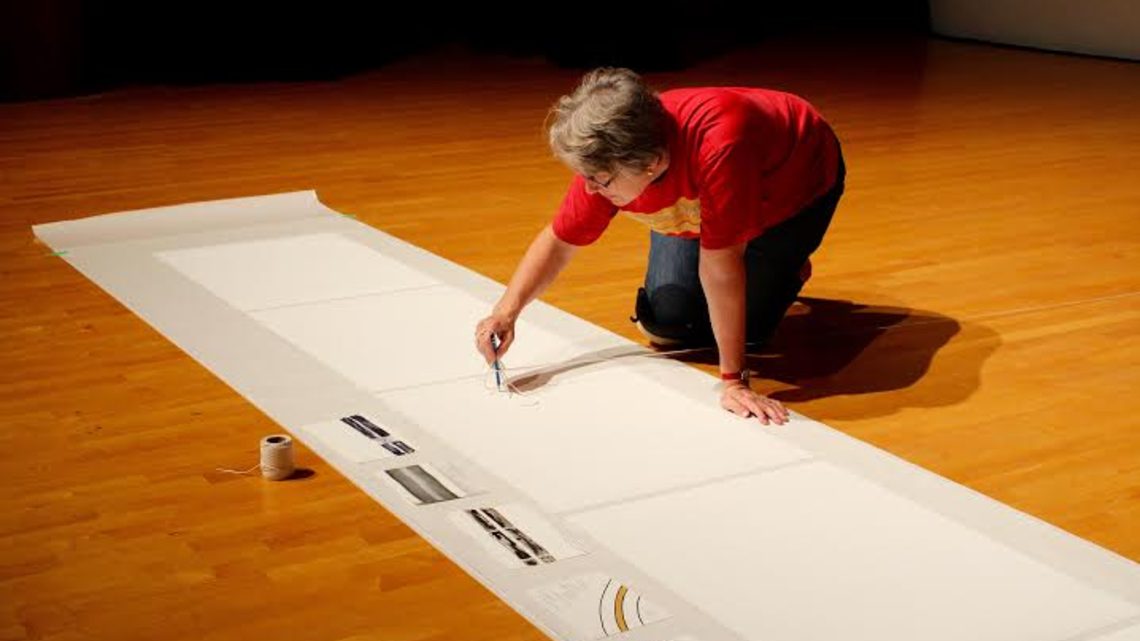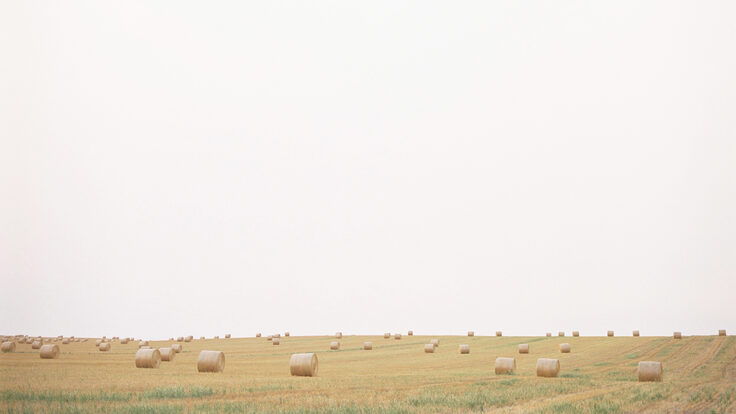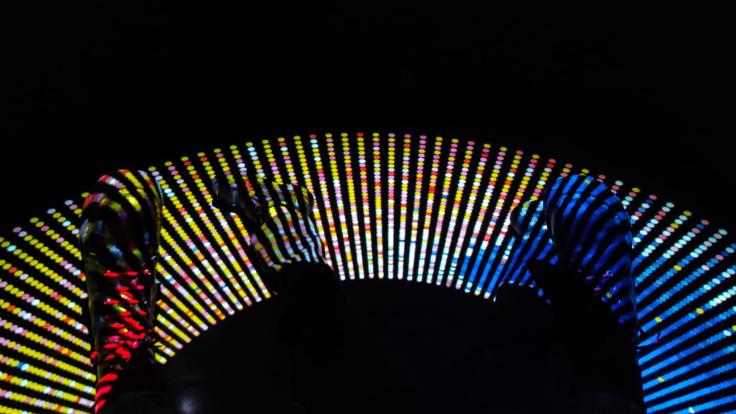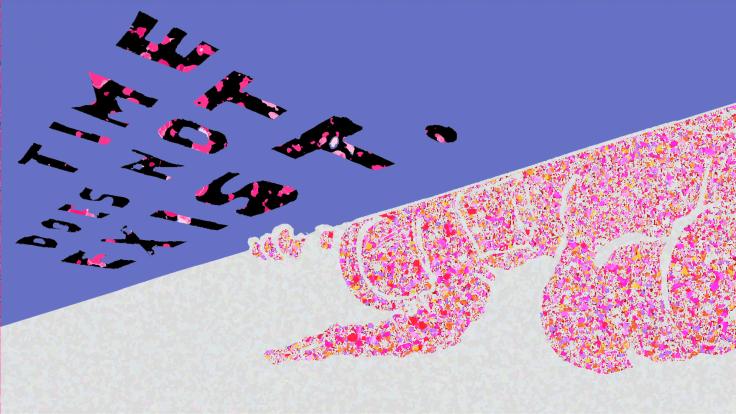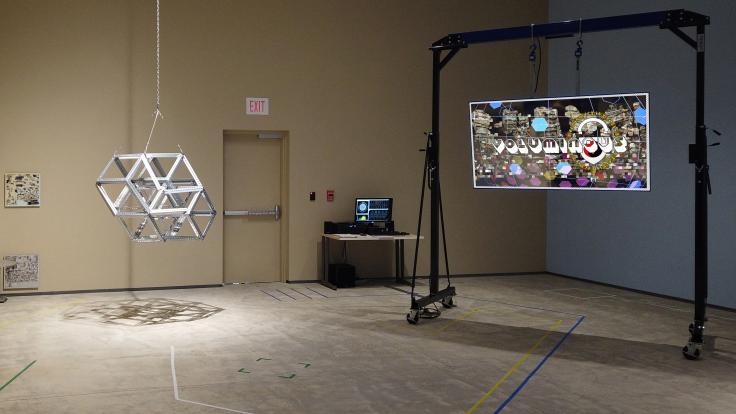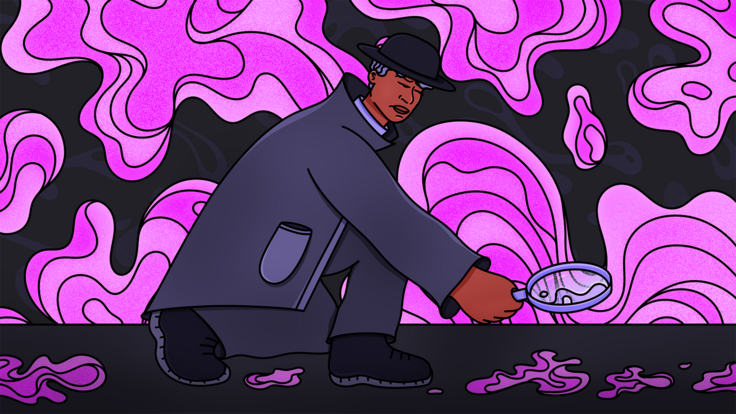How did you end up at Fermilab?
In March 2014 I had an exhibition of my work at North Park College. Several members of the Fermilab art committee attended my talk. Hearing me speak about one of my residencies, Georgia Schwender, curator of Fermilab’s art gallery, invited me to help her establish a pilot residency that would continue Fermilab’s tradition of nurturing both art and science.
What did you do during your residency?
During a residency, I want to have a full immersion experience. I worked closely with passionate scientists, including Don Lincoln, Sam Zeller and Debbie Harris. I read books and popular science journalism, attended public lectures, and watched videos. This immersive learning is the scaffolding from which I create my art.
What’s your artistic process like?
I want to make engaging, accessible art about real, complicated science: art that will connect with the public and inspire them to ask their own questions about the nature of reality and the origin of the cosmos. When I converse with a scientist, I glean the key points and translate them in an artistic way. Many artists use oil paint, watercolor and other traditional materials. But when I work, I want to use media to reinforce the message in the art. Everyone uses textiles in their daily lives, so creating work in them felt like a natural choice.
What inspired you at Fermilab?
The Standard Model was the first piece of physics I learned. This conceptual tool was not only an appropriate beginning for the project, but a door into a fascinating way to understand reality. Passionate scientists of the present and science heroes of the past, especially Ray Davis, Richard Feynman and Robert Wilson, also inspired me.
What is one of your most memorable experiences at Fermilab?
I took several training courses, including radiation safety training. This allowed me to shadow operators into the guts of several experiments during a recent shutdown. It was thrilling. Accelerator science is about riding a bucking bronco of energetic particles. Understanding how the messy beam behaves showed me that nature is not just about forests, creatures and rocks. At the subatomic level, nature is wild, energetic and mysterious. I plan to make large-scale drawings based on what I have learned in the Accelerator Division.
Did anything surprise you?
I’ve been surprised at every turn. As an artist, I’ve been trained to observe the surface of reality. Everything looks solid and unmoving. But the subatomic realm is far more spacious and energetic than I could have imagined.
How did you become interested in expressing science in your art?
Before I created art about science, I painted landscapes. I created portraits of area waterways. I was editing out all the manmade features and creating idealized images of streams and rivers. One day I was canoeing past an aeration station on the Chicago Canal and became curious about the real story of water in a dense urban area. I approached the District about beginning an art project that would tell this story. I started a residency at the Metropolitan Water Reclamation District of Greater Chicago. Strange as it may sound, I fell in love with science in the middle of a wastewater treatment plant.
How did your residency at Fermilab differ from past residencies?
The most striking difference is the amount of resources available at Fermilab. It’s hard to imagine any other government agency where you will find not only cutting-edge science, but also a buffalo herd, a beautiful art gallery, a concert hall, a restored prairie and a graveyard.
What will you take with you when you leave Fermilab?
One of the most powerful lessons I learned with this residency is that I am not afraid to learn any kind of science. I have limits because I lack the background in math. Despite this, I feel confident about learning enough science to make meaningful art. If I can learn science, others can too.
What’s next?
Once I’ve finished the art, the project is far from over. Finding places to show the work I made while at Fermilab will be the next challenge. I want to use the work to inspire viewers to take a closer look at science in general and particle physics in particular. I hope the project helps people with no technical training, like me, to appreciate the beauty and elegance of our universe.
I have no set plans for my next residency, but I have a few ideas simmering on the back burner. Perhaps I will be surprised by another opportunity. My residency with Fermilab has changed my view of reality enough for me to know that there are surprises out in the universe for any of us who take the time to discover what science can teach us.



